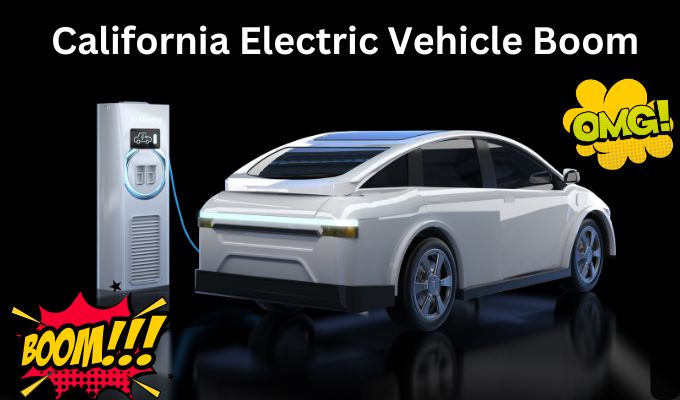California Electric Vehicle Boom
Over the past 12 months, installations of fast charges in California have grown exponentially.
What this means is that there’s now a lot more fast charges available than what there was only a short time ago.
Fast Charging Infrastructure Surges
In comparison to the number of gas stations, there is one to five. Dc fast charges have been built out in the United States over the past 12 months at a pretty rapid pace.
Government Incentives Drive Expansion
The Biden administration is trying to incentivize this, trying to get more companies to do this quickly.
Governor Gavin Newsom has announced on Saturday that there is now one EV fast charging station for every five gas stations in California.
And I’ve reported on the fact that because of the big increase in EV sales in California, air quality has significantly improved.
This is another one of the benefits. California has led the US in the number of EVs and EV charging stations that have been bought and installed every year since 2016.
So it’s for eight straight years, according to the US Energy Information Administration in December.
Rapid Growth in Charging Stations
According to the governor’s office, 105,000 public or shared private EV chargers have been installed throughout California, on top of over 500,000 home EV charges.
And this is a pretty cool stat because there’s a lot of DC fast charges. There should be more. It would be good if there was more, but 500,000 home EV chargers.
Plus, you can plug in at home without a home EV charger as well. Just, of course, it’s much slower.
California now has 105,000 public EV chargers. So 105 chargers, but of those, 85,000 slowish charges, and 10,000 are super fast charges.
Now, the cool thing is we’re going to see this ratio change over the next few years. We’re going to see 10,000 fast charges.
There’s a few more than 10,000 now, but we’re going to see that number go up. It’s going to hit 20,000 probably by the end of the end of the next, maybe end of the decade, 2030, might even be more than 20,000.
The number of gas stations is going to continue. It’s going to fall very quickly. The other thing worth remembering is that, of course, it’s not a like for like comparison because you can’t put gasoline in your car at home, right? Almost no one has a gas pump at their home, but you can charge at home.
Future Outlook: Continued Expansion
In February, California approved a $2 billion, $1.9 billion plan to deploy 40,000 more public EV charges.
That’s in addition to the $1.8 billion, it’s already invested in EV charging infrastructure.
Now, for some bizarre reason, They have invested some money as well into increasing the number of hydrogen refueling stations, but a few have closed.
So the number of hydrogen refueling stations has gone down. That’s probably because no one’s really buying hydrogen cars.
But the number of DC fast charges has gone up, even though funding has gone into both. More than around 1.85 million EVs have been sold in California so far.
Transition to Renewable Energy
34% of new ZEVs sold in the US are sold in California. And what this means is we’re seeing a revolution because I’ve just reported today as well that solar and batteries together are transforming the grid in California.
Now, if you plug in your EV to the grid, it’s a very high probability, if you plug it in during the middle of the day, that’s for sure, that it will be powered completely by renewable energy.
There’s many days of the week now that solar is putting more than 150 % of energy into the grid.So it’s been a huge excess.
That excess of around 50 % is being soaked up by some of the biggest batteries in the world.
And then that extra energy is being pumped back into the grid at the peak time, so between 7:00 to 9:00 PM.
And the number one source of energy between 7:00 to 9:00 PM is no longer fossil fuels.
It’s now battery power, which is being powered by solar. So we’re seeing a revolution going on in California between the changes to the grid, changes to DC charges, AC charges, and the number of EVs.
And it’s really changing everything. The air quality is improving. The cost of living, I believe, is going to go down significantly.
And energy eventually will be a marginal cost. Now, Tony Siever talks a lot about the energy hitting marginal cost.
If you want to know more about that, absolutely fascinating. But what it means is that right now, you get your energy bill, I get my energy bill, and I got to pay another $1,000, or whatever it may be.
That will change completely within the next 5 to 10 years, to the point where you won’t even care. You won’t even think about energy cost as being a factor in your daily life.
